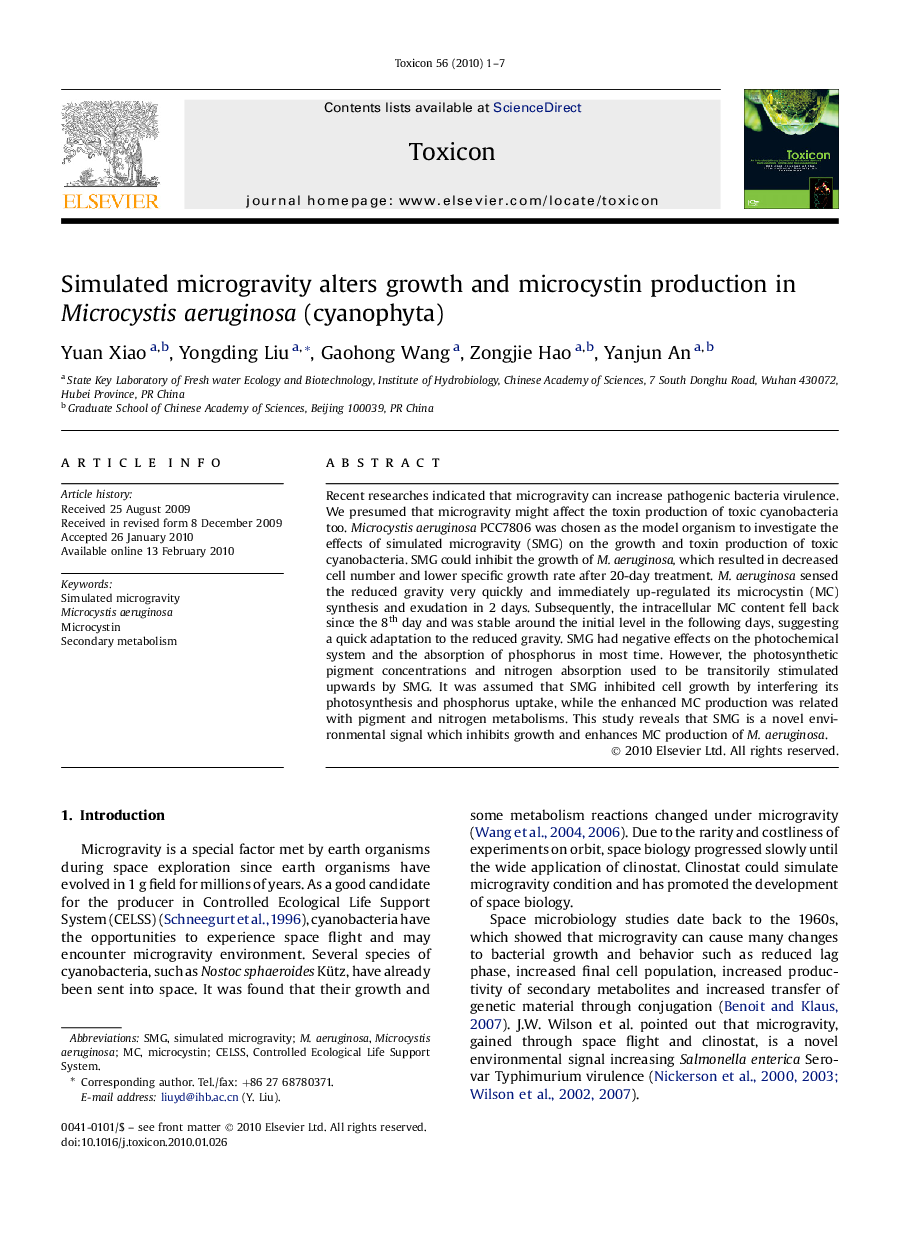| Article ID | Journal | Published Year | Pages | File Type |
|---|---|---|---|---|
| 2066374 | Toxicon | 2010 | 7 Pages |
Recent researches indicated that microgravity can increase pathogenic bacteria virulence. We presumed that microgravity might affect the toxin production of toxic cyanobacteria too. Microcystis aeruginosa PCC7806 was chosen as the model organism to investigate the effects of simulated microgravity (SMG) on the growth and toxin production of toxic cyanobacteria. SMG could inhibit the growth of M. aeruginosa, which resulted in decreased cell number and lower specific growth rate after 20-day treatment. M. aeruginosa sensed the reduced gravity very quickly and immediately up-regulated its microcystin (MC) synthesis and exudation in 2 days. Subsequently, the intracellular MC content fell back since the 8th day and was stable around the initial level in the following days, suggesting a quick adaptation to the reduced gravity. SMG had negative effects on the photochemical system and the absorption of phosphorus in most time. However, the photosynthetic pigment concentrations and nitrogen absorption used to be transitorily stimulated upwards by SMG. It was assumed that SMG inhibited cell growth by interfering its photosynthesis and phosphorus uptake, while the enhanced MC production was related with pigment and nitrogen metabolisms. This study reveals that SMG is a novel environmental signal which inhibits growth and enhances MC production of M. aeruginosa.
